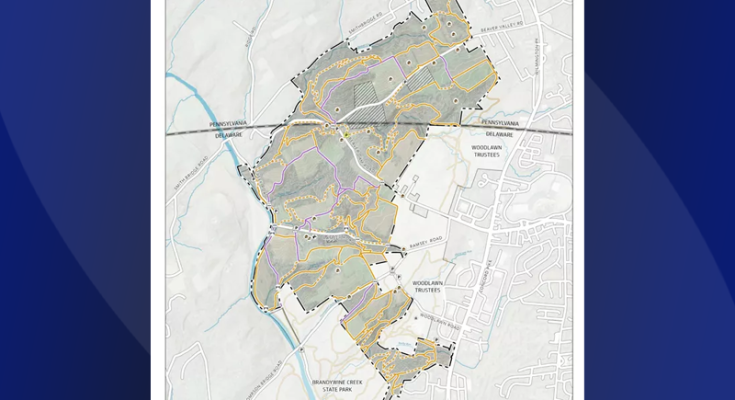The Brandywine Valley Trail Plan at First State National Historical Park can move forward. The plan defines a designated shared-use 27.8-mile trail network that will provide high-quality recreational opportunities, promote visitor safety and enjoyment and preserve connectivity with leased property within the Brandywine Valley section of the park and neighboring properties.
Today, the National Park Service (NPS) issued a Finding of No Significant Impact (FONSI) on the Environmental Assessment (EA) for the plan. In compliance with the National Environmental Policy Act (NEPA), the EA considers alternatives, including a no-action alternative, as well as environmental impacts. The EA was presented to the public during three public meetings and was available for public comment from July 2, 2024 to August 1, 2024. After consultation with the Delaware Tribe of Indians, Delaware Nation, the Delaware State Historic Preservation Office, the Pennsylvania State Historic Preservation Office and local government and considering public comments, the NPS selected the proposed action alternative.
The selected action will:
- Designate a 27.8 mile shared-use trail network, which includes the administrative roads. All trails will be open to hiking, equestrian use and bicycling (including Class 1 and Class 3 e-bikes). The trail network incorporates 15 miles of existing trails and will add 8.5 miles of new trails (to be constructed). The NPS will close and restore to natural condition a total of 8.1 miles of trails. In addition, 4.3 miles of administrative roads will be open to public recreational use.
- Reduce impacts on soil erosion and water resources by closing or rerouting trails with excessive slopes and reducing water crossings.
- Take roughly 5-years to implement. Progress can be found on the park’s website.
The FONSI, EA and related documents are available on the NPS Planning, Environment and Public Comment website. The FONSI establishes that, based on the EA, there would be no significant impact on the environment as a result of the selected action.
Source: National Park Service

